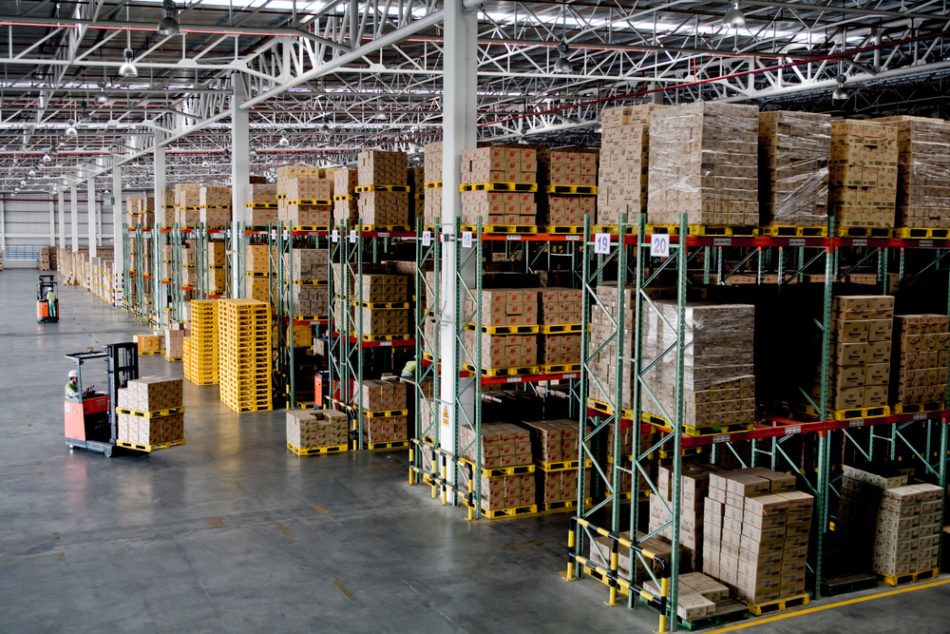6 Key Considerations When Choosing a Warehouse WiFi Solution
Warehouses are notoriously difficult when it comes to providing a good WiFi solution. Many are 50,000 square feet or larger, but sheer size isn’t the...
3 min read
 Robert Elgart
:
Jun 6, 2019 5:52:39 AM
Robert Elgart
:
Jun 6, 2019 5:52:39 AM
he warehouse of the future will rely on IoT devices to cut costs, improve efficiencies, and boost security. In this article, we’ll discuss what warehouse managers need to know to prepare their warehouse networks for emerging technologies.
The connected warehouse of tomorrow (and today in some cases) is more than a building full of boxes. It’s a technological marvel rivaling the most advanced manufacturing operations. With the benefits of automation come new demands on warehouse IT network infrastructure. In this article, we’ll look at what a smart warehouse looks like, and how you can take advantage of new warehouse technologies.
Essentially warehouse robots, these devices include driverless forklifts, pallet lifts, and side clamps. AGVs can navigate spaces with guide tape, visual (video) cues, gyroscopic navigation, lasers, and even wires and rails, just to name a few. They are proven to be safer, faster, and more efficient than manual moving, making them perfect for heavy deliveries. AGVs can also be used in conjunction with warehouse workers.
The warehouse management system (WMS) is the software that keeps warehouses running smoothly. WMS software can keep real-time records of SKUs, their location within the warehouse, and other granular performance metrics. The WMS is fed by a Warehouse Control System, which “directs traffic” in actual operations, acting as a bridge between the software, automated devices, and workers on the floor.
They might seem low-tech in comparison, but smart thermostats, smoke detectors, and connected lighting systems serve an even more critical function in warehouses than they do in offices or home settings. Such massive spaces will see exponentially higher savings when employing these devices to reduce overhead. The convenience of the IoT does not come without its pitfalls — IoT cybersecurity is of the utmost importance given that warehouses often store millions of dollars worth of cargo.
Wearables present one of the biggest growth areas for smart warehouse technology, due to the variety of potential applications. Barcode scanners are already used in most warehouses, but putting scanners into gloves and smart glasses leaves the worker with their hands free; when multiplied over thousands of pickings, the time saved by not having to take out and put away a scanner can really add up.
Companies like Amazon and DHL are also testing the use of smart glasses and armbands that track employee movements and direct them throughout the warehouse. (The smart glasses also employ augmented reality to direct workers.) This automated supervision can immediately catch picking errors, improving both accuracy and efficiency.
Voice-activated devices have also proven popular in some warehouse operations. Another solution to free up workers’ hands, voice-activated headsets allow employees to receive direction and send responses through a mobile device.
Upgrading warehouse operations with these technologies will make increasing sense as costs come down and customer expectations rise. It will also mean adding a tremendous strain to existing warehouse networks — unless warehouse managers implement network upgrades in a timely manner. This is easier said than done. Warehouses pose unique challenges and hurdles not typically seen in traditional office environments. Here’s how to prepare your network to support the connected warehouse technologies of the future.
Having too few access points will obviously leave your devices searching for a signal, and your remaining AP bandwidth overwhelmed. And the most seemingly obvious solutions — adding access points or increasing AP signal strength — can actually make things worse by increasing interference. And while the AP signal might reach a device on the other side of the room, user endpoints (which usually have weaker signals) may not be able to send one back.
Having too many APs can be just as bad. Overlapping coverage can likewise create signal interference, causing lag — not to mention the wasted networking costs.
WiFi signals can penetrate some materials better than others. Brick walls and metal shelving will always pose major obstacles, but even your inventory should be accounted for. Coverage will be better in a warehouse storing mattress and clothes than one with metal car parts. And if your warehouse layout is made to be altered, that must also be taken into account.
Having enough APs won’t matter if they can’t reach workers on the floor, particularly in high-density areas. In warehouses, be particularly careful about putting APs on high ceilings or walls. You could create narrow coverage or coverage that does not even reach the floor.
In warehouses with AGVs, it is especially important to ensure that vehicles will always be connected. Many vehicles and some inventory are stored in cages, which can block signals; be sure to put an AP inside of the cage. Also, ensure that a vehicle’s metal chassis does not block its own reception.
Having a professional wireless site survey performed is one of the most important things you can do before setting up (or upgrading) a warehouse WiFi network. Bringing in experienced professionals to evaluate your WiFi needs can help ensure that the resulting network delivers both superior service and optimal cost-efficiency. It can help take the guesswork out of many of the factors mentioned here, for example, analyzing how to deliver sufficient capacity throughout the space while taking into account layout, materials, and client needs.
With nearly three decades of experience designing and installing high-performing warehouse WiFi networks, the IT professionals at Turn-key Technologies (TTI) are capable of handling all of your wireless networking needs. Contact us today to learn more about what a wireless site survey could do for your warehouse network — whether you’re installing a new one, or improving an existing one.

Warehouses are notoriously difficult when it comes to providing a good WiFi solution. Many are 50,000 square feet or larger, but sheer size isn’t the...

WiFi networks for warehouses: a notoriously difficult challenge. Here are the five most common mistakes made when setting up warehouse WiFi networks....

Warehouse robots increase productivity and efficiency, and can take on labor-intensive tasks that drain human capital. From inventory drones to...